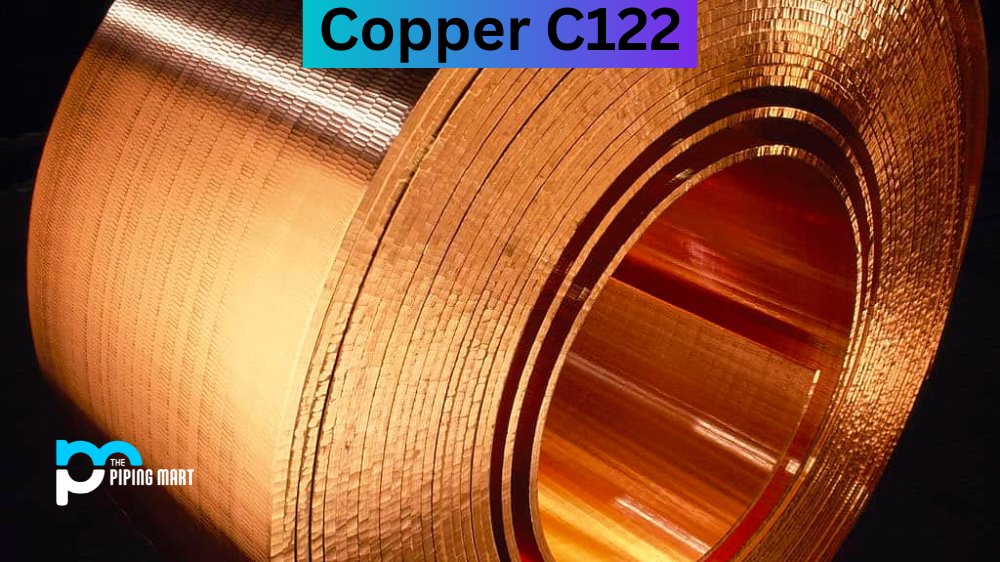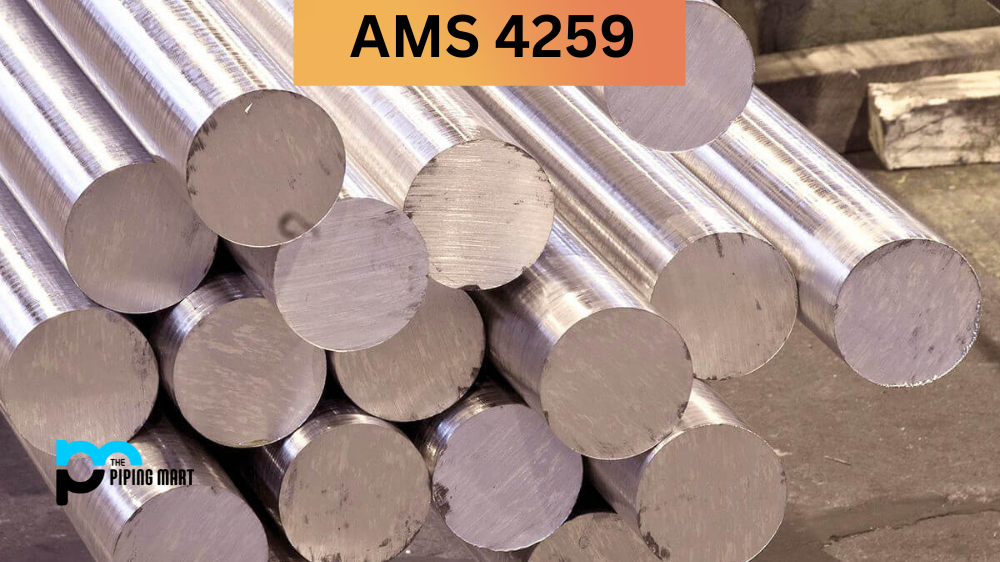Copper C122 is a copper-cobalt alloy known for its excellent corrosion resistance, heat resistance, and mechanical properties. It has many uses in industries such as aerospace engineering, electrical engineering, and even medical device manufacturing. In this blog post, we’ll examine the composition of Copper C122, its chemical and physical properties, and uses corrosion resistance and heat treatment processes.
C12200 Copper Composition
C12200 copper composition is a type of copper alloy that contains around 99.9% pure copper, along with small amounts of lead and phosphorus to improve its machinability. This composition makes it an ideal material for many different applications, including plumbing, electrical wiring, and architectural design. Its high conductivity and corrosion resistance make it a popular choice in various industries. The C12200 copper composition also has excellent thermal and electrical conductivity, making it ideal for conductors and heat exchangers.
| ELEMENT | CU (1,2,3) | P |
| Min % | 99.99 | 0.015 |
| Max % | — | 0.040 |
C12200 Copper Chemical Properties
The addition of cobalt to pure copper creates an alloy that has higher levels of wear resistance than pure copper alloys. Additionally, it features superior hot-shortness and high hardness at elevated temperatures when compared to other copper alloys. Copper C122 is a durable and corrosion-resistant alloy which features its unique combination of mechanical properties, wear resistance, and low coefficient of friction. It is an alloy composed of copper, nickel, chromium, and molybdenum, which gives it superior tensile strength when compared to other copper alloys. Furthermore, its solderability is excellent in both acidic and alkaline environments, making it the ideal choice for many applications. Copper C122 provides exceptional repeatability and accuracy in machining while still possessing impact toughness due to its ability to work hard without fail. These properties make it a preferred alloy for numerous industries that highly value performance and reliability.
C12200 Copper Mechanical Properties
Copper C122 is a versatile alloy exhibiting excellent mechanical properties that make it ideal for many industrial applications. Its thermal expansion coefficient is well balanced, and its strength-to-weight ratio is high enough to make it very stable in even extreme temperatures. Its low coefficient of friction makes copper C122 an effective material for tribological components, such as bearings, bushings and gears. Also, copper C122 has excellent wear characteristics thanks to its work-hardening abilities, making it well-suited for use in abrasion-resistant machine parts. In addition, copper C122 boasts superior corrosion resistance and outstanding electrical conductivity, making it suitable for situations where a balance between both electrical connections and mechanical performance is needed. Copper C122 truly lives up to its reputation as an essential industrial material.
| FORM | TEMPER | TENSILE STRENGTH | YS-0.5% EXT (KSI) | ELONGATION (%) | ROCKWELL (B) | ROCKWELL (F) | ROCKWELL (30T) | SHEAR STRENGTH (KSI) | FATIGUE STRENGTH | SECTION SIZE (IN) |
| PLATE SHEET STRIP | H02 | 42 | 36 | 14 | 40 | 84 | 50 | 26 | 13 | 0.04 |
| H01 | 38 | 30 | 35 | 25 | 70 | 25 | 0.25 | |||
| H01 | 38 | 30 | 25 | 25 | 70 | 36 | 25 | 0.04 | ||
| H00 | 36 | 28 | 30 | 10 | 60 | 25 | 25 | 0.04 | ||
| H00 | 36 | 28 | 40 | 10 | 60 | 25 | 0.25 | |||
| M20 | 32 | 10 | 50 | 40 | 22 | 0.25 | ||||
| M20 | 34 | 10 | 45 | 45 | 23 | 0.04 | ||||
| H10 | 57 | 53 | 4 | 62 | 95 | 64 | 29 | 0.04 | ||
| H04 | 50 | 45 | 6 | 50 | 90 | 57 | 28 | 13 | 0.04 | |
| H04 | 45 | 40 | 20 | 45 | 85 | 26 | 1 | |||
| H04 | 50 | 45 | 12 | 50 | 90 | 28 | 0.25 | |||
| OS025 | 34 | 11 | 45 | 45 | 23 | 11 | 0.04 | |||
| OS050 | 32 | 10 | 50 | 40 | 22 | 0.25 | ||||
| OS050 | 32 | 10 | 45 | 40 | 22 | 0.04 | ||||
| H08 | 55 | 50 | 4 | 60 | 94 | 63 | 29 | 14 | 0.04 | |
| PIPE | H04 | 50 | 45 | 10 | 50 | 90 | 28 | |||
| TUBE | H80 | 55 | 50 | 8 | 60 | 95 | 63 | 29 | 19 | 0.065 |
| H55 | 40 | 32 | 25 | 35 | 77 | 45 | 26 | 14 | 0.065 | |
| OS025 | 34 | 11 | 45 | 45 | 23 | 0.065 | ||||
| OS050 | 32 | 10 | 45 | 40 | 22 | 11 | 0.065 |
C12200 Copper Physical Properties
Copper C122 is a ductile metal with excellent weldability characteristics. It has a melting point range between 1730-1790°F (945-980°C). Its tensile strength ranges from 60-90 ksi (414-621 MPa) depending on the heat treatment processes used during fabrication.
| Melting Point – Liquidus ⁰F | 1981 | |
| Melting Point – Solidus ⁰F | 1981 | |
| Density lb/cu in. at 68⁰F | 0.323 | |
| Specific Gravity | 8.94 | |
| Electrical Conductivity % IACS at 68⁰F | 101(1) | |
| Thermal Conductivity Btu/sq ft/ft hr/ ⁰F at 68⁰F | 226 | |
| Coefficient of Thermal Expansion 10-6 per ⁰F (68-212 ⁰F) | 9.4 | |
| Coefficient of Thermal Expansion 10-6 per ⁰F (68-392 ⁰F) | 9.6 | |
| Coefficient of Thermal Expansion 10-6 per ⁰F (68-572 ⁰F) | 9.8 | |
| Specific Heat Capacity Btu/lb/⁰F @ 68 ⁰F | 0.092 | |
| Modulus of Elasticity in Tension ksi | 17000 | |
| Modulus of Rigidity ksi | 6400 |
C12200 Copper Equivalent
| ASME B16.22 | ASTM B111 | ASTM B370 | ASTM B623 | ASTM B88 |
| ASME B16.29 | ASTM B133 | ASTM B379 | ASTM B638 | MIL B-18907 |
| ASME SB111 | ASTM B152 | ASTM B395 | ASTM B640 | MIL B-20292 |
| ASME SB133 | ASTM B224 | ASTM B42 | ASTM B641 | MIL T-22214 |
| ASME SB152 | ASTM B272 | ASTM B432 | ASTM B68 | MIL T-24107 |
| ASME SB359 | ASTM B280 | ASTM B442 | ASTM B687 | MIL T-3235 |
| ASME SB395 | ASTM B302 | ASTM B447 | ASTM B698 | SAE J461 |
| ASME SB42 | ASTM B306 | ASTM B5 | ASTM B716 | SAE J463 |
| ASME SB543 | ASTM B359 | ASTM B506 | ASTM B743 | UNS C12200 |
| ASME SB75 | ASTM B360 | ASTM B543 | ASTM B75 |
C12200 Copper Uses
It is frequently used for components in aerospace engineering applications as well as medical device manufacturing.
Corrosion Resistance
Due to its superior corrosion resistance qualities, Copper C122 is often used in applications where exposure to harsh chemicals or corrosive environments is expected.
Heat Treatment Processes
The most common heat treatment applied to this alloy are annealing and solution treating/precipitation hardening (ST/PH). Annealing involves heating the metal above its recrystallization temperature before slowly cooling it down in order to increase both its ductility and formability characteristics. Solution treating/precipitation hardening increases the material’s hardness by creating precipitates within the metal which strengthens it against wear or tear over time.
Machining
Due to its high thermal conductivity (400 W/mK), machining with Copper C122 can be difficult due to rapid tool wear caused by excess heat buildup during cutting operations.
Welding
When welding this material, it should be preheated prior to welding in order to prevent cracking during cooling due to rapid thermal expansion differences between base materials and filler metals used during welding operations.
Conclusion :
Copper C122 is an incredibly versatile alloy with excellent corrosion resistance making it ideal for use in harsh environments or industrial settings where exposure to chemicals or corrosive agents could be a problem. Its combination of elements provides superior strength while still maintaining good levels of ductility, which makes it easier for fabricators or welders when working with the material onsite or in production settings. The addition of cobalt also increases wear resistance resulting in longer-lasting parts or components when compared with other similar alloys on the market today! With its wide range of applications across various industries, understanding the composition and features of this copper-cobalt alloy can prove invaluable when considering any new construction project!

Pipingmart is a B2B portal that specializes in metal, industrial and piping items. Additionally, we share the latest information and information about materials, products and various types of grades to assist businesses that are involved in this business.




